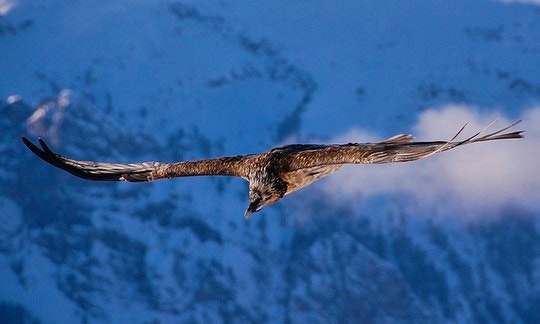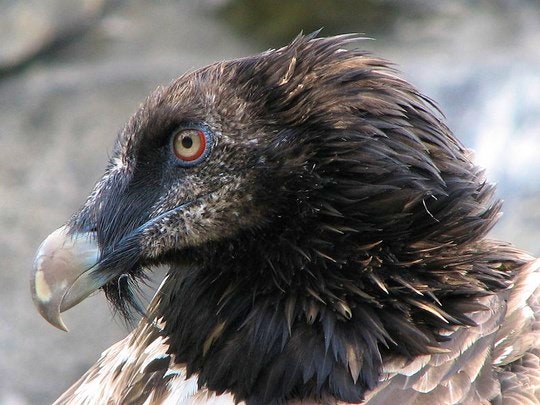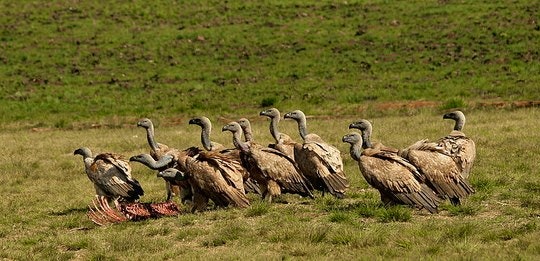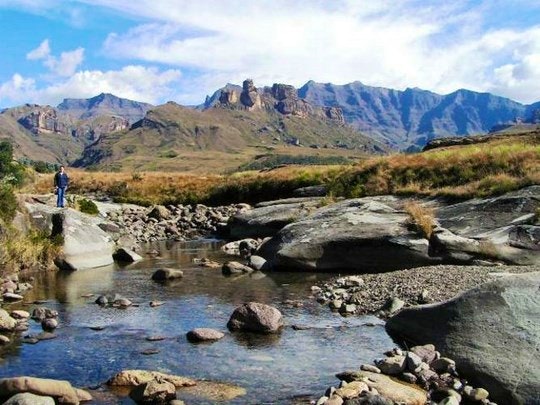The Drakensberg Mountain Range is known in Zulu as uKhahlamba which translates to Barrier of Spears. So it shouldn’t come as a surprise that there are some unique feathered predators which haunt its towering, rocky heights and lush lowlands. If you’re hoping to spot some flying bone eaters, here are some of the more interesting ones to be seen:
- Bearded Vulture, Giants Castle Game Reserve
Soaring high above the cracks and crevices in the folding landscape, the Bearded Vulture – also known locally as a Lammergeier, calls the Maloti-Drakensberg region and also the mountainous regions of Lesotho, its home. This majestic and surprisingly handsome predator is going through a slow and painful extinction, with less than 100 nesting pairs left in South Africa.
The 30% decline in their species, since 2000, is attributed to misguided farmers poisoning livestock carcasses which the birds then feast on. They do this as they believe these birds prey on their young livestock. There is also a belief by several African clans that these birds are effective in various mutis. Bearded Vultures feed on marrow of already deceased animals, and small animals like dassies, tortoises, and rabbits; very rarely do they attack larger species such as bucks.
Visit the Bearded Vulture Project to get inspired by the story of Olivia Taylor, who has worked in conjunction with Ezemvelo KZN Wildlife, the Maluti-Drakensberg Vulture Project, alongside Sonja Kruger and Ian Rushworth, to raise some much-needed funds, and consider making a donation to this worthwhile cause as well.
- Cape Vulture, uKhahlamba Drakensberg Park & Sehlabathebe National Park
The Cape Griffon Vulture is the alternative name for the Cape Vulture, and though it is endemic to the Drakensberg area, it too is fighting a losing battle against humanities intrusion on its feeding grounds with agriculture, building developments, and biological resources used.
The Cape Vulture haunts the heights of the uKhahlamba Drakensberg Park in KwaZulu-Natal, and you can also likely spot it flying over the Sehlabathebe National Park in Lesotho in search of carcasses to scavenge.
It is quite a large vulture in comparison to the rest of its species, and roosts predominantly in the sheer cliff faces, which keeps the species safe from predators which could sneak up on them while they roost.
Best Viewing Spot
The best time to spot these feathered scavengers, is between May – September, and the place you should head to is the Vulture hide (also known as Lammergeyer Hide) within the Giants Castle section of the uKhalamba National Heritage Park. You will need to call ahead to book a spot at the hide. Tel: 036-353-3718.
Visitors can then arrive to find a bucket full of bones already waiting for them. They can then scatter these on the cliff top, before retreating to the hide, fitted with one-way glass, to watch these graceful birds swoop in to begin feasting on the bones.
Apart from the above two vultures, other predatory bird species you’re likely to spot while here include the Martial Eagle, Black Eagle, Jackal Buzzard, and ravens.
Let us know what bone eating birds you’ve come across on your travels.
Main image courtesy of Noel Reynolds (Flickr)








